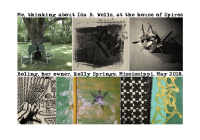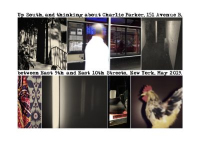.
.
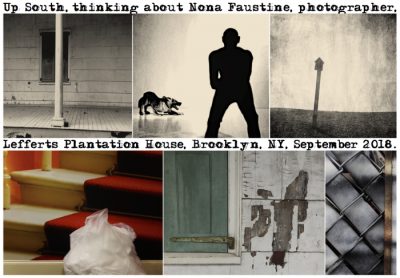
.
“Me,. Thinking about Nona Faustine” .2018
.
From the series Pastoral Scenes of the Gallant South
Archival inkjet print, 4½ x 6½ inches, framed to 14 x 14 inches
.
.
___
.
.
…..The piece is an homage to the Brooklyn-based photographer and visual artist Nona Faustine. Her 2015 series “White Shoes” consists of self-portraits in which Faustine stands nude before New York locations that once held links to the city’s slave trade.
…..As many as 20% of the population of 18th .century New York City were slaves, a fact often neglected in histories of the city and the nation. Faustine’s shoes signify the demand that, for so long and so often, African Americans adopt white culture.
…..The critic Jonathan Jones notes that “baring her flesh to history,” Faustine “conveys the most fundamental horror of the. slave trade, the way it reduced people to mere bodies, machines of muscle.” In one image in the series, Faustine stands before the Lefferts Homestead, a Dutch colonial farmhouse, once the center of a 240-acre slave plantation. Built between 1777 and 1783, the house is in Brooklyn’s Prospect Park, having being moved four blocks north of its original site in 1918.
.
___
.
Other subjects in this series, all of which will be published on Jerry Jazz Musician, include the legendary blues artist Robert Johnson (click here to view), .Harriet and Thomas Truesdell, abolitionists and conductors on the Underground Railroad (click here to view), educator, author, and civil rights leader Booker T. Washington (click here to view), the educator and investigative journalist Ida B. Wells (click here to view), civil rights activist Homer Plessy, (click here to view), and photographer, filmmaker, and oral historian Rev. L.O. Taylor (click here to view). The artist also takes the series “up South” to Brooklyn, focusing on the Truesdells, and the contemporary African-American photographer Nona Faustine. (He also pays homage to jazz musicians, and his series of jazz narratives can be viewed by clicking here.)
The series comes out of a road trip through the South that the artist took in 2018. The pieces can be interpreted as a form of self-portrait, of the artist paying homage in his own way to an individual, and of the place which that person occupied and continues to occupy. This is the South that the photographer Sally Mann describes as “a place extravagant in its beauty, reckless in its fecundity, terrible in its indifference, and dark with memories.”
Ingham’s photo-narratives explore invented spaces, alternative histories, and visual fictions, sometimes incorporating altered, appropriated images. In some pieces, images alone form a narrative; a horizontal row of five to seven photographs creates a “cinematic” form. In others, words and images create a dynamic interplay, and in the fotonovela series, the photographs move closer to a traditional illustrative function for the text. None of these interchanges between image and text are straightforward, however. Placing verbal and visual elements together immediately creates a tension for the viewer that they want to find/interpret in order to “explain” the narrative of the piece; thus, the artist expects viewers to find a unique narrative of their own in the work.
.
“Thinking About Robert Johnson”
.
.
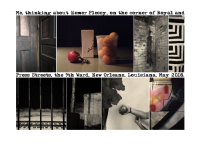
.
“Thinking About Charlie Parker”
.
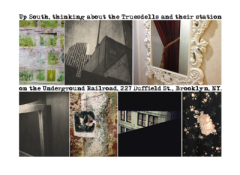
“Thinking About the Truesdells”
.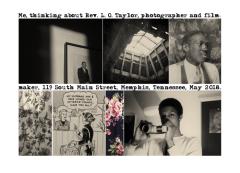
“Me, Thinking About Rev. L.O. Taylor”
.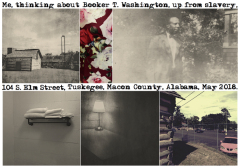
“Me, Thinking About Booker T. Washington”
.
.
___
.
.
photo by Jacqueline Ramirez
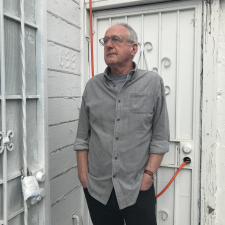
.
Born and educated in England, Charles Ingham moved to California in 1982. He has always been interested in hybrid forms and the intersection of literature and the visual arts, his photography often seeking to transgress the traditional boundaries separating the verbal and the visual.
Ingham lives in San Diego and shows his work at Distinction Gallery in Escondido. His work may also be found at his website: charlesingham.com
.
.
.





